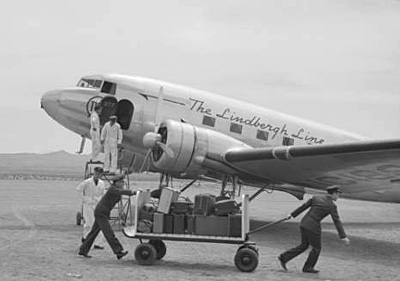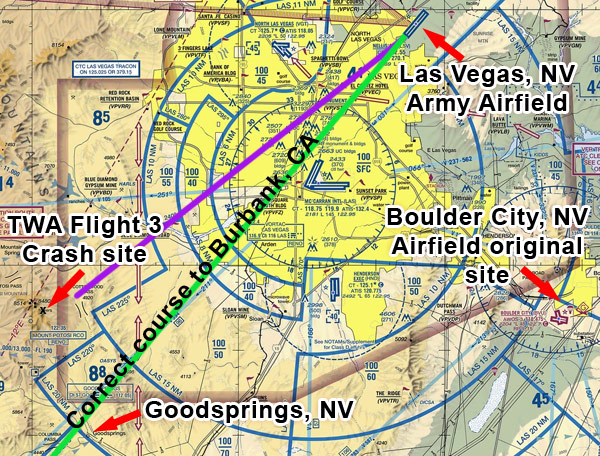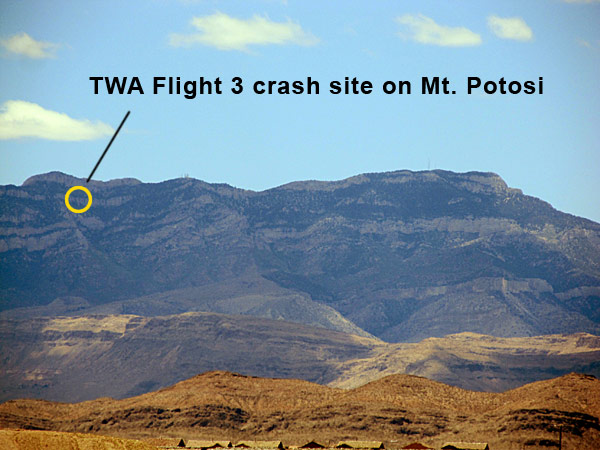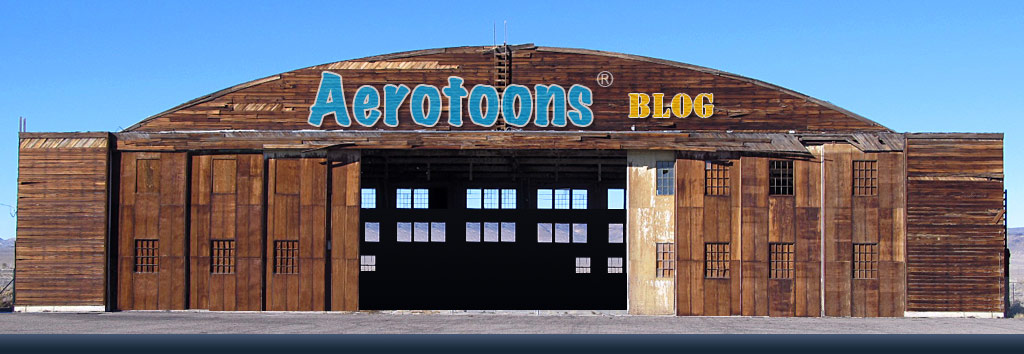Spitfire VS. Mustang
I have always thought that the World War II British Supermarine Spitfire and the North American P51 Mustang were two of the best looking fighter planes of their time but how did they compare in performance? I thought it would be interesting to take a look at them side by side.
| Supermarine Spitfire Mk VB |
North American P51D Mustang |
| • Manufacturer: Supermarine |
• Manufacturer: North American Aviation |
| • Crew: 1 |
• Crew: 1 |
| • Length: 29 ft 11 in. (9.12 m) |
• Length: 32 ft 3 in. (9.83 m) |
| • Height: 11 ft 5 in. (3.86 m) |
• Height: 13 ft 4½ in. |
| • Wingspan: 36 ft 10 in. (11.23 m) |
• Wingspan: 37 ft 0 in. (11.28 m) |
| • Wing Area: 242.1 ft² (22.48 m²) |
• Wing Area: 235 ft² (21.83 m²) |
| • Airfoil: NACA 2213 (root) NACA 2209.4 (tip) |
• Airfoil: NAA/NACA 45-100 / NAA/NACA 45-100 |
| • Empty weight: 5,065 lb. (2,297 kg) |
• Empty weight: 7,635 lb. (3,465 kg) |
| • Loaded weight: 6,622 lb. (3,000 kg) |
• Loaded weight: 9,200 lb. (4,175 kg) |
| • Maximum Takeoff Weight: 6,700 lb. (3,039 kg) |
• Maximum Takeoff Weight: 12,100 lb. (5,490 kg) |
| • Powerplant: 1 × Rolls-Royce Merlin 45 supercharged V12 engine, 1,470 hp (1,096 kW) |
• Powerplant: 1 × Packard V-1650-7 V-12, with a 2 stage intercooled supercharger- 1,490 hp (1,111 kW) |
| • Variants: 3 |
• Variants: 20 |
| • Number built: 20,351 |
• Number built: 15,586 |
| • First Flight: March 5 1936 |
• First Flight: October 26, 1940 |
| |
|
| Performance |
Performance |
| |
|
| • Cruise speed: 272 mph (237 kts.) |
• Cruise speed: 362 mph (315 kts.) |
| • Maximum speed: 370 mph (322 kts.) |
• Maximum speed: 440 mph (383 kts.) |
| • Rate of climb: 2,600 ft/min (13.2 m/s) |
• Rate of climb: 3,200 ft/min (16.3 m/s) |
| • Service Ceiling: 36,500 ft. (11,125 m) |
• Service Ceiling: 41,900 ft. (12,800 m) |
| • Combat Range: 470 mi. (410 nm.) |
• Combat Range: 1,650 mi. (1,434 nm.) with external tanks |
| |
|
| Armament |
Armament |
| |
|
| • A Wing- 8 x .303 in. Browning MkII machine guns (350 rounds per gun) |
• Guns: 6 × 0.50 in. (12.7mm) AN/M2 Browning machine guns with 1,840 total rounds (380 rounds for each on the inboard pair and 270 rounds for each of the outer two pair) |
| • B Wing- 2 x 20 mm Hispano MkII (60 rounds per gun), 4 x .303 in. Browning MkII machine guns (350 rounds per gun) |
• Rockets: 6 or 10 × 5.0 in. (127 mm) T64 H.V.A.R rockets (P-51D-25, P-51K-10 on) |
| • C Wing- 4 x 20 mm Hispano MkII cannon (120 rounds per gun) |
• Bombs: 1,000 lb (453 kg) total on two wing hardpoints |
| • C Wing (Alt.) 2 x 20 mm Hispano MkII (120 rounds per gun), 4 x .303 in. Browning machine guns (350 rounds per gun) |
• Each hardpoint: 1 × 100 lb (45 kg) bomb, 1 × 250 lb (113 kg) bomb or 1 × 500 lb (226 kg) bomb |
| • E Wing- 2 x 20 mm Hispano MkII cannon (120 rounds per gun), 2 x .50 in. Browning machine guns (250 rounds per gun) |
|
The Spitfire was designed as a short-range, high-performance interceptor aircraft by R. J. Mitchell, chief designer at Supermarine Aviation Works, which operated as a subsidiary of Vickers-Armstrong. Mitchell's design aims were to create a well-balanced, high-performance bomber interceptor and fighter aircraft capable of fully exploiting the power of the Merlin engine, while being relatively easy to fly.
Alex Henshaw, was the chief test pilot at the Castle Bromwich factory. Henshaw wrote: "....I loved the Spitfire in all of her many versions. But I have to admit that the later marks, although they were faster than the earlier ones, were also much heavier and so did not handle so well. You did not have such positive control over them. One test of maneuverability was to throw her into a flick-roll and see how many times she rolled. With the Mark II or the Mark V one got two-and-a-half flick-rolls but the Mark IX was heavier and you got only one-and-a-half. With the later and still heavier versions, one got even less. The essence of aircraft design is compromise, and an improvement at one end of the performance envelope is rarely achieved without a deterioration somewhere else."
The Mustang was an American long-range, single-seat fighter and fighter-bomber designed in 1940 by North American Aviation in response to a requirement of the British Purchasing Commission. The Purchasing Commission approached North American Aviation to build Curtiss P-40 fighters under license for the Royal Air Force but North American Aviation proposed the design and production of a more modern fighter. The prototype NA-73X airframe, designed by a team lead by engineer Edgar Schmued, was rolled out on September 9, 1940, 102 days after the contract was signed, and first flew on October 26, 1940.
The Mustang was originally designed to use the Allison V-1710 engine, which, in its earlier variants, had limited high-altitude performance. In 1942 Ronald Harker, a test pilot for Rolls-Royce suggested fitting a Merlin 61 which dramatically increased the performance and range of the Mustang "B" and later models.
Chief Naval Test Pilot Eric Brown, tested the Mustang at RAE Farnborough in March 1944 and noted, "The Mustang was a good fighter and the best escort due to its incredible range, make no mistake about it. It was also the best American dogfighter. But the laminar flow wing fitted to the Mustang could be a little tricky. It could not by any means out-turn a Spitfire. No way. It had a good rate-of-roll, better than the Spitfire, so I would say the plusses to the Spitfire and the Mustang just about equate. If I were in a dogfight, I'd prefer to be flying the Spitfire. The problem was I wouldn't like to be in a dogfight near Berlin, because I could never get home to Britain in a Spitfire!"
Here is a great book about the Supermarine Spitfire
Spitfire: The Legend Lives On by John Dibbs (Author), Tony Holmes (Author)
Here is a great book about the P51 MustangP-51 Mustang: Seventy-Five Years of America's Most Famous Warbird Hardcover – October 19, 2015
by Cory Graff
2017 Great American Total Solar Eclipse
 On Aug. 21, 2017, America will fall under the path of a total solar eclipse.
On Aug. 21, 2017, America will fall under the path of a total solar eclipse.
The solar eclipse will darken skies all the way from Oregon to South Carolina. Totality (when the moon completely fills the center of the sun) will only be visible for at most 2 minutes 40 seconds along a stretch of land about 70 miles (113 kilometers) wide. That path will pass through Oregon, Idaho, Wyoming, Nebraska, Kansas, Missouri, Illinois, Kentucky, Tennessee, Georgia, North Carolina and South Carolina. Because the shadow of the moon will move from west to east, totality will occur later in the day the farther east you travel.
Everyone in the continental U.S. that is outside of the main path will still be able to see at least a partial solar eclipse, (when the moon partly fills the center of the sun).
REMEMBER: It is only during totality, (when the moon completely fills the center of the sun), considered a safe time to directly view the eclipse with the naked eye. But skywatchers should NEVER look at a partial solar eclipse without proper eye protection.
Looking directly at the sun, even when it is partially covered by the moon, can cause serious eye damage or blindness.
The chart below lists the moment of mid-totality and the duration of totality for a handful of cities that lie close to the center of the path. Data from NASA.
|
|
Eclipse Begins |
Totality Begins |
Totality Ends |
Eclipse Ends |
|
|
Madras, OR |
09:06 a.m. |
10:19 a.m. |
10:21 a.m. |
11:41 a.m. |
PDT |
|
Idaho Falls, ID |
10:15 a.m. |
11:33 a.m. |
11:34 a.m. |
12:58 p.m. |
MDT |
|
Casper, WY |
10:22 a.m. |
11:42 a.m. |
11:45 a.m. |
01:09 p.m. |
MDT |
|
Lincoln, NE |
11:37 a.m. |
01:02 p.m. |
01:04 p.m. |
02:29 p.m. |
CDT |
|
Jefferson City, MO |
11:46 a.m. |
01:13 p.m. |
01:15 p.m. |
02:41 p.m. |
CDT |
|
Carbondale, IL |
11:52 a.m. |
01:20 p.m. |
01:22 p.m. |
02:47 p.m. |
CDT |
|
Paducah, KY |
11:54 a.m. |
01:22 p.m. |
01:24 p.m. |
02:49 p.m. |
CDT |
|
Nashville, TN |
11:58 a.m. |
01:27 p.m. |
01:29 p.m. |
02:54 p.m. |
CDT |
|
Clayton, GA |
01:06 p.m. |
02:35 p.m. |
02:38 p.m. |
04:01 p.m. |
EDT |
|
Columbia, SC |
01:03 p.m. |
02:41 p.m. |
02:44 p.m. |
04:06 p.m. |
EDT |
1942 TWA Flight 3 Crash
 Oddly enough this story begins with a trip to the Pioneer Saloon in Goodsprings, Nevada. I had heard that Clark Gable was at this saloon in the early 40's and never knew exactly why.
Oddly enough this story begins with a trip to the Pioneer Saloon in Goodsprings, Nevada. I had heard that Clark Gable was at this saloon in the early 40's and never knew exactly why.
The Pioneer Saloon was built in 1913 and has been featured in several TV shows and movies. Since this saloon is only a short drive south of Las Vegas and has a colorful history I had to go visit it!
When you first drive into Goodsprings it is as if you are traveling back in time. The town is almost like a "ghost town" and it is said that the population here is around 229. The bar itself is over 100 years old and is the first building that you notice when you drive into town.
Over the years, lead, silver, copper, zinc, and gold have all been mined from this area but during World War I and World War II the town really "boomed" due to the need for metals and ores used in the war effort.

Of course this still doesn't explain why Clark Gable was here but there is a connection between Gable, the Pioneer Saloon, and the crash of TWA flight 3.

In 1942 TWA (Transcontinental and Western Air) Flight 3 was a scheduled transcontinental domestic passenger flight from New York City, to Burbank, California, with stops in: Newark, Pittsburgh, Columbus, Dayton, Indianapolis, St Louis, Kansas City, Wichita, Amarillo, Albuquerque, and then direct to Los Angeles/Burbank. TWA called this route "Sky Apache" the total distance for the trip was 2,625 miles and took over 15 hours flying time (in the air) to complete.
 TWA operated the route with Douglas twin-engined DC-3-382's like that seen here on the ramp in Boulder City, Nevada.
TWA operated the route with Douglas twin-engined DC-3-382's like that seen here on the ramp in Boulder City, Nevada.
The Douglas DC-3 was powered by two, nine cylinder Wright R-1820 G202A Cyclone engines rated at 1200 H.P. each giving the airplane a cruise speed of 207 mph and a range of 1500 miles.
On the morning of January 16, 1942 actress Carole Lombard (wife of Clark Gable), Elizabeth Peters (mother of Lombard), and MGM press agent Otto Winkler boarded TWA Flight 3 in Indianapolis, Indiana to return to California. Lombard was returning from a successful War Bonds promotion tour in the Midwest, where she helped raise over $2,000,000 (which would be worth $31,152,516.13 today)!
At the scheduled stop in Albuquerque, New Mexico TWA Flight 3 took on an additional 15 U.S. Army Air Corp members and made a crew change. At this time during World War II military personnel were deemed essential and took precedence over other passengers so Lombard, Peters, and Winkler were asked to deplane in order to accommodate them.  Lombard "made a fuss" and insisted that her party was essential to the war effort and convinced the station agent to let her group reboard the flight to continue on and as a result of this three other passengers were removed from the flight.
Lombard "made a fuss" and insisted that her party was essential to the war effort and convinced the station agent to let her group reboard the flight to continue on and as a result of this three other passengers were removed from the flight.
This would turn out to be a fatal "twist of fate" for Lombard and her party later on in the flight.
According to the Civil Aeronautics Board investigation report, TWA Flight 3 is regularly scheduled to operate between Albuquerque, New Mexico, and Burbank, California, without any intermediate stops. It was planned, however, that this flight should make intermediate stops at Winslow, Arizona, and Las Vegas, Nevada, because of reduced fuel to accommodate the passenger and cargo loading from Albuquerque. After the Captain of TWA Flight 3 reached cruising altitude and had an opportunity to establish ground speed and fuel consumption, he apparently found that he could continue to Las Vegas, and still have a sufficient supply of reserve fuel remaining in the tanks, thus eliminating the necessity of an extra landing at Winslow and consequently save time.
 Las Vegas Army Airfield (now Nellis Air Force Base) was chosen over Boulder City, Nevada (the logical choice because it had a TWA terminal) as a fuel stop because in 1942 Boulder did not have runway lights. Landings and Take-offs at night from this airport were Not Allowed.
Las Vegas Army Airfield (now Nellis Air Force Base) was chosen over Boulder City, Nevada (the logical choice because it had a TWA terminal) as a fuel stop because in 1942 Boulder did not have runway lights. Landings and Take-offs at night from this airport were Not Allowed.
This could quite possibly be the ultimate/fatal mistake made for TWA Flight 3.
According to the Civil Aeronautics Board investigation report, TWA Flight 3's flight plan was usually prepared by the First Officer under the supervision of the Captain, and was to be approved and signed by the Captain (in this case was never signed by the Captain) indicating a magnetic heading of 218° which is correct if departing from Boulder City, NV to Burbank, CA but is incorrect if departing from Las Vegas Army Airport to Burbank. (The heading should have been 205° to take them to Burbank, CA.) In addition, the highest obstacle when flying the correct course from Boulder City to Burbank is 5800 feet but from Las Vegas to Burbank is 8500 feet (Mt. Potosi) but the altitude filed on the flight plan was for 8000 feet.
 The correct course is indicated in green on this current sectional map and the actual (incorrect) course flown by TWA Flight 3 is shown by the purple line, the line also happens to be a magnetic heading of 218°.
The correct course is indicated in green on this current sectional map and the actual (incorrect) course flown by TWA Flight 3 is shown by the purple line, the line also happens to be a magnetic heading of 218°.
Sadly, on January 16, 1942 at 7:20 p.m. (PST) TWA Flight 3 impacted a near verticle cliff "Double Up Peak" on Mt. Potosi at an altitude of 7,770 feet above sea-level approximately 15 minutes after take-off from the Las Vegas Army Airfield. It would appear probable, therefore, that the airplane had been climbing steadily from the time of take-off, and had not quite reached its intended operating altitude at the time of the accident. All souls on board were lost, there were no survivors.


 So now the story comes back around to why Clark Gable was at the Pioneer Saloon in 1942.
So now the story comes back around to why Clark Gable was at the Pioneer Saloon in 1942.
As you can see from the aerial view and the picture I took near the Pioneer Saloon in Goodsprings, NV it is the closest spot from which a search could be mounted to find any survivors of TWA Flight 3.
He waited for three days at the bar for word about his wife of less than two years Carole Lombard unfortunately there were no survivors.





 On Aug. 21, 2017, America will fall under the path of a total solar eclipse.
On Aug. 21, 2017, America will fall under the path of a total solar eclipse.
 Oddly enough this story begins with a trip to the Pioneer Saloon in Goodsprings, Nevada. I had heard that Clark Gable was at this saloon in the early 40's and never knew exactly why.
Oddly enough this story begins with a trip to the Pioneer Saloon in Goodsprings, Nevada. I had heard that Clark Gable was at this saloon in the early 40's and never knew exactly why.

 TWA operated the route with Douglas twin-engined DC-3-382's like that seen here on the ramp in Boulder City, Nevada.
TWA operated the route with Douglas twin-engined DC-3-382's like that seen here on the ramp in Boulder City, Nevada. Lombard "made a fuss" and insisted that her party was essential to the war effort and convinced the station agent to let her group reboard the flight to continue on and as a result of this three other passengers were removed from the flight.
Lombard "made a fuss" and insisted that her party was essential to the war effort and convinced the station agent to let her group reboard the flight to continue on and as a result of this three other passengers were removed from the flight. Las Vegas Army Airfield
Las Vegas Army Airfield  The correct course is indicated in green on this current sectional map and the actual
The correct course is indicated in green on this current sectional map and the actual 

 So now the story comes back around to why Clark Gable was at the Pioneer Saloon in 1942.
So now the story comes back around to why Clark Gable was at the Pioneer Saloon in 1942.